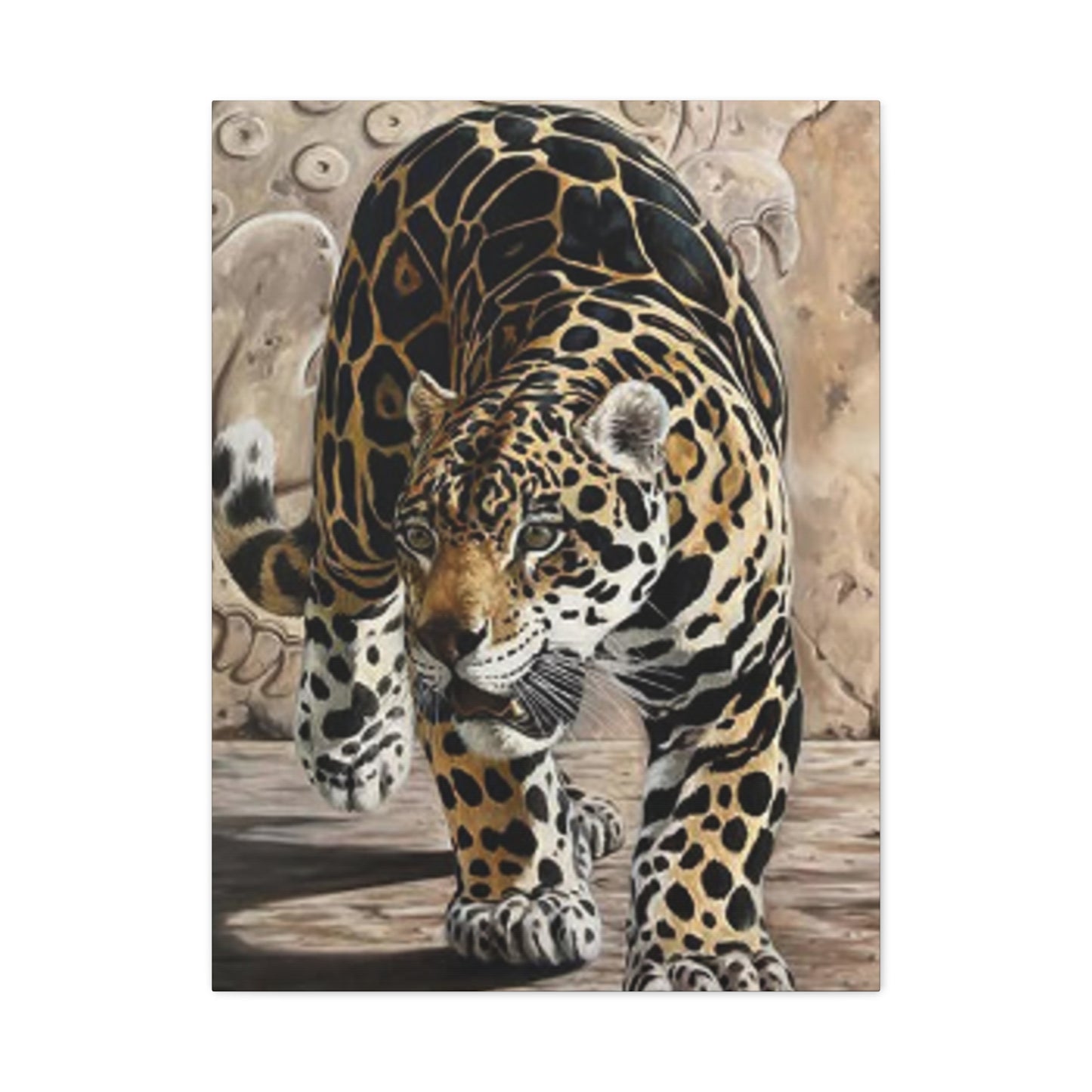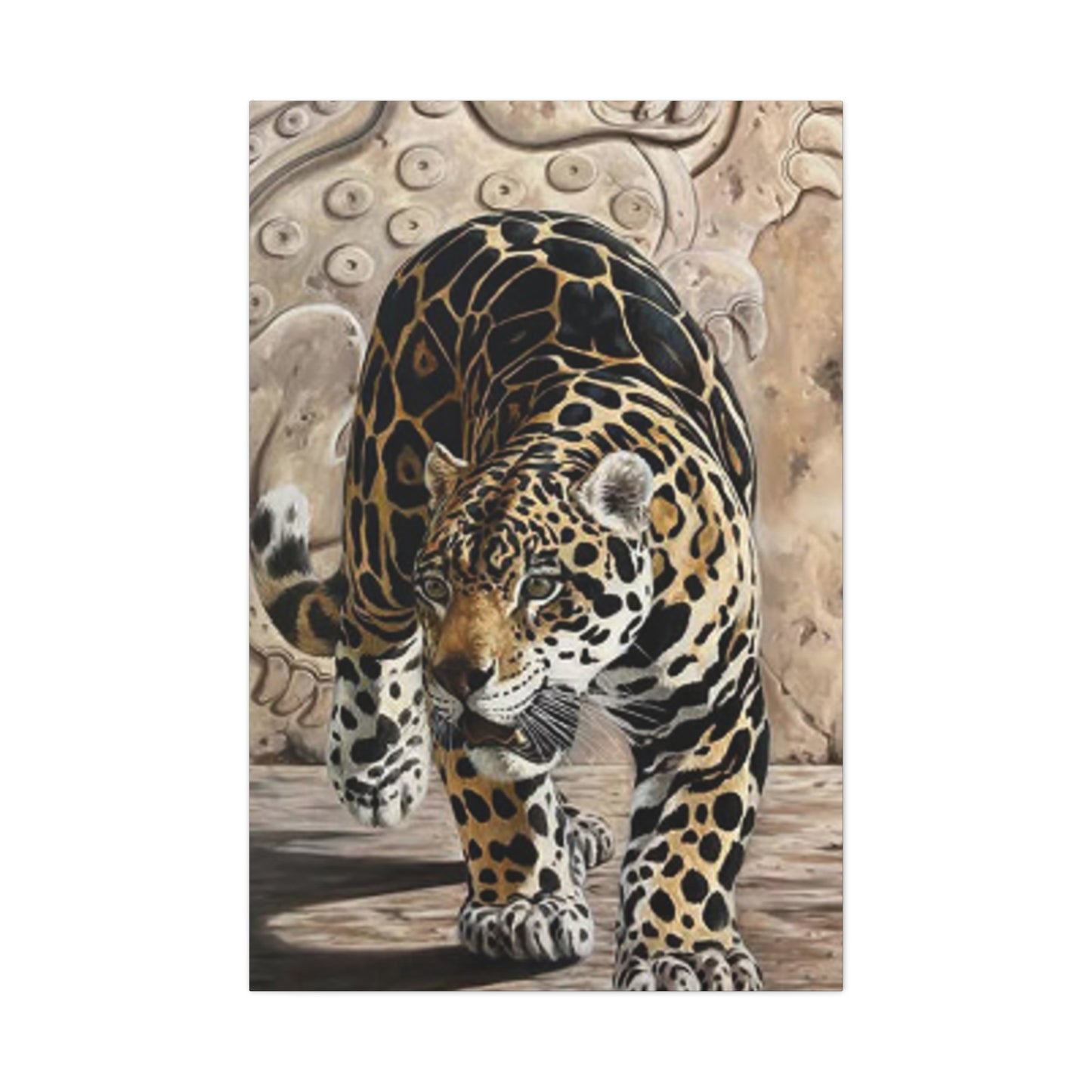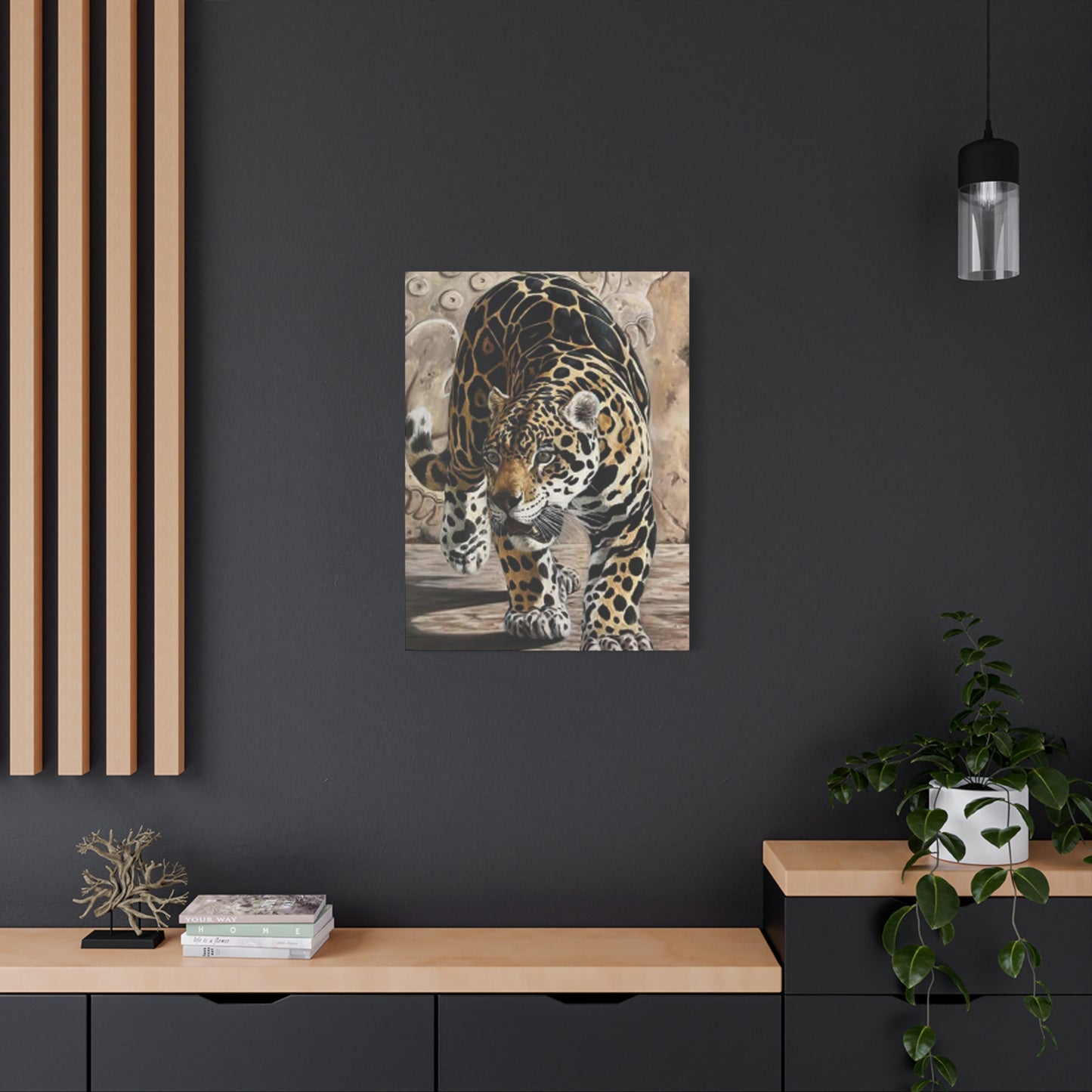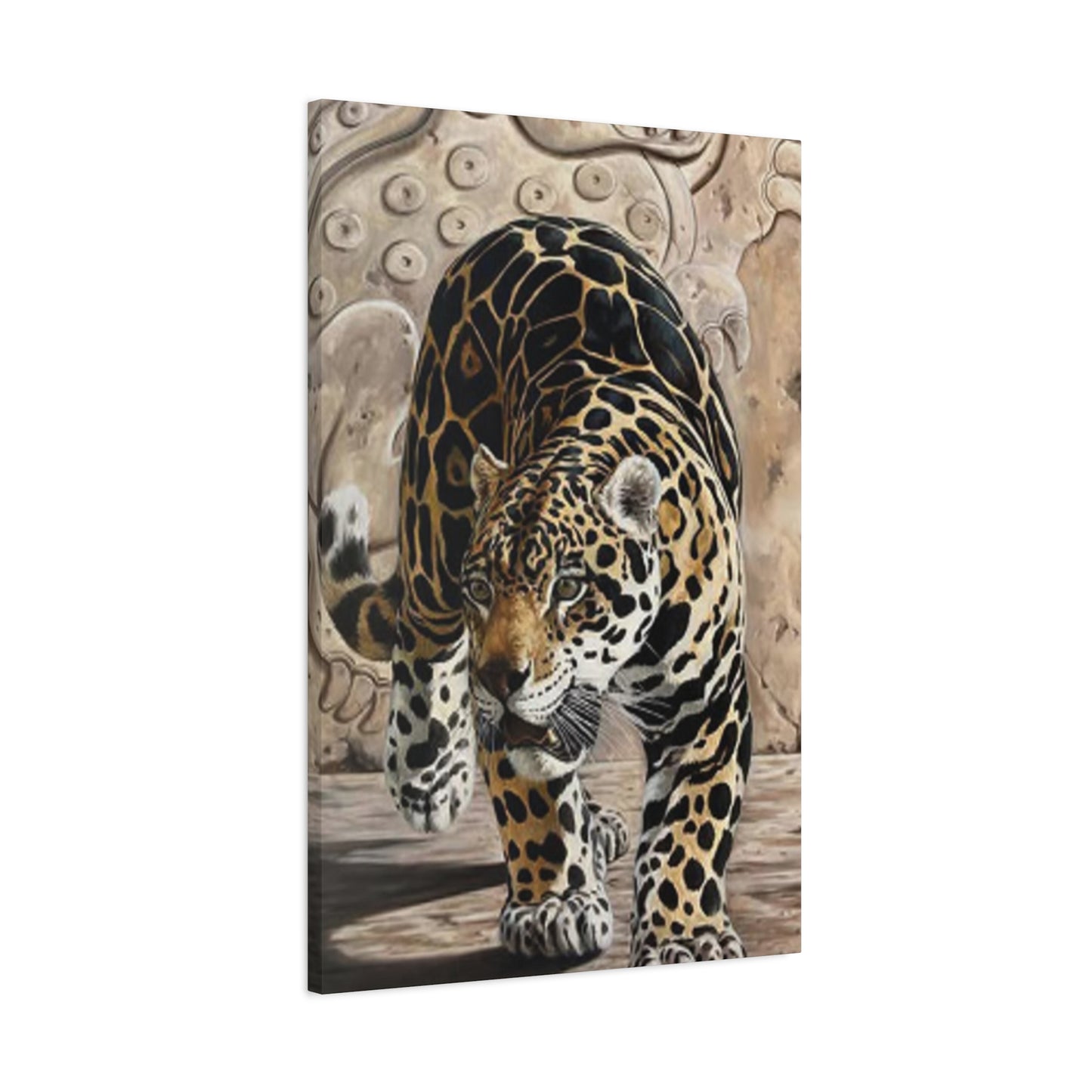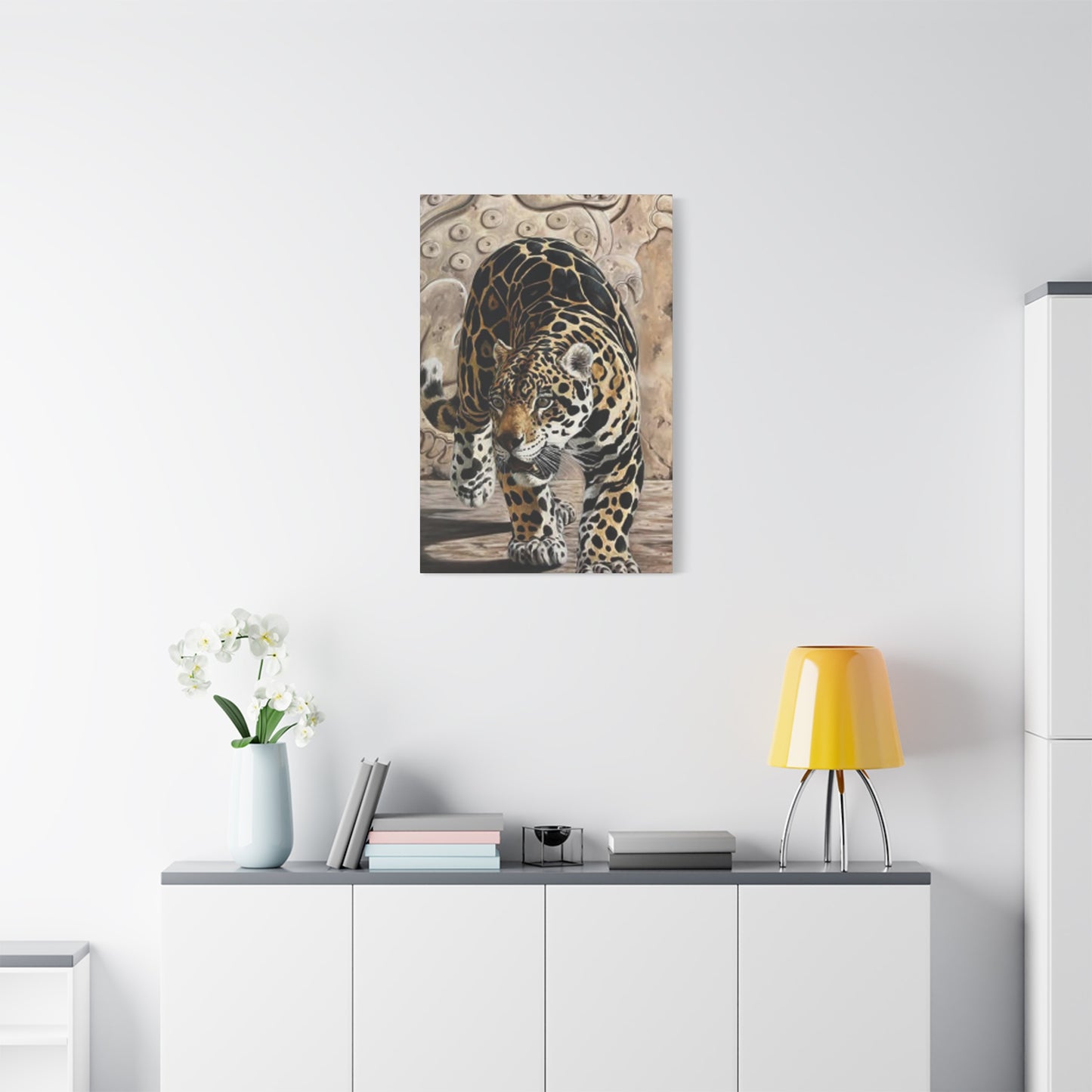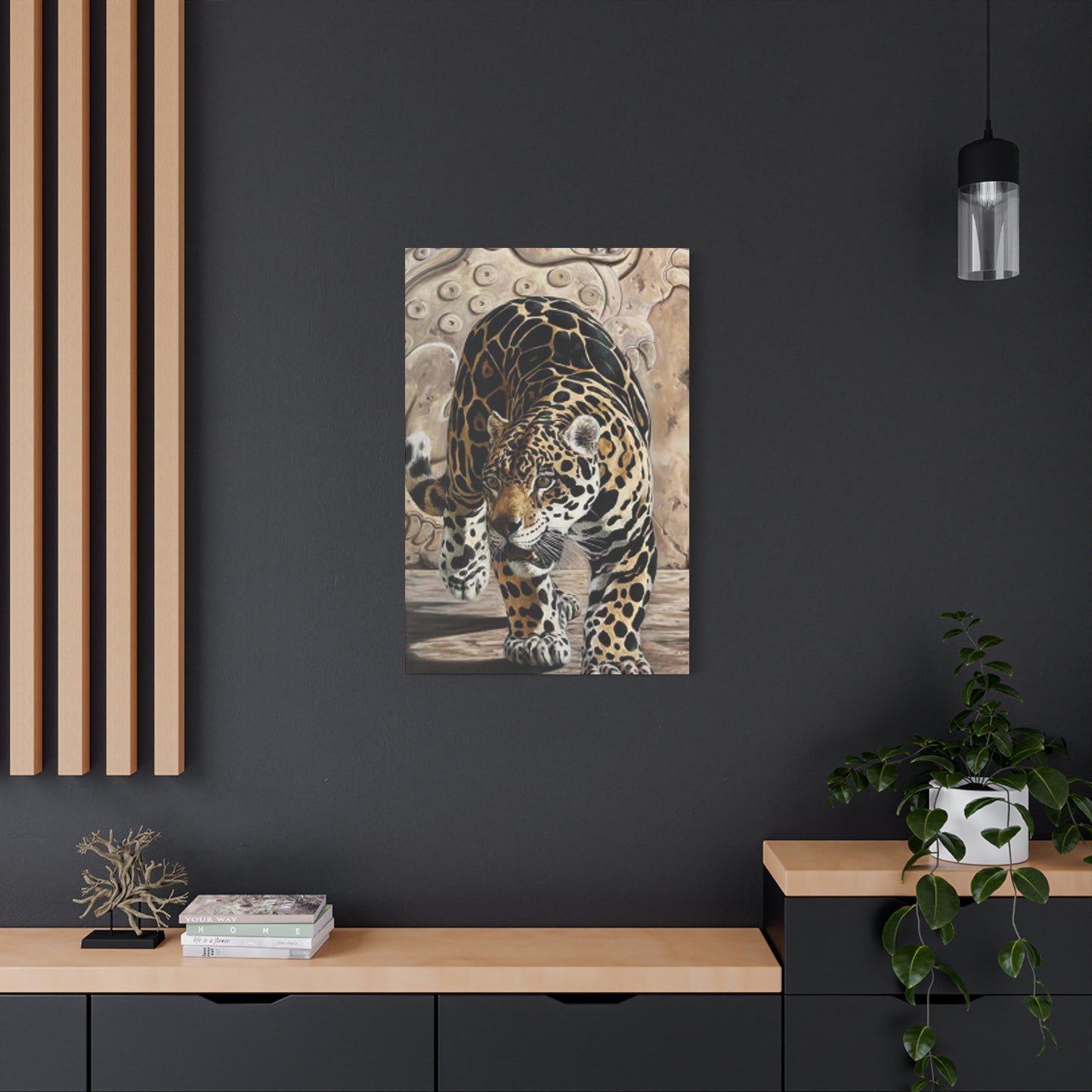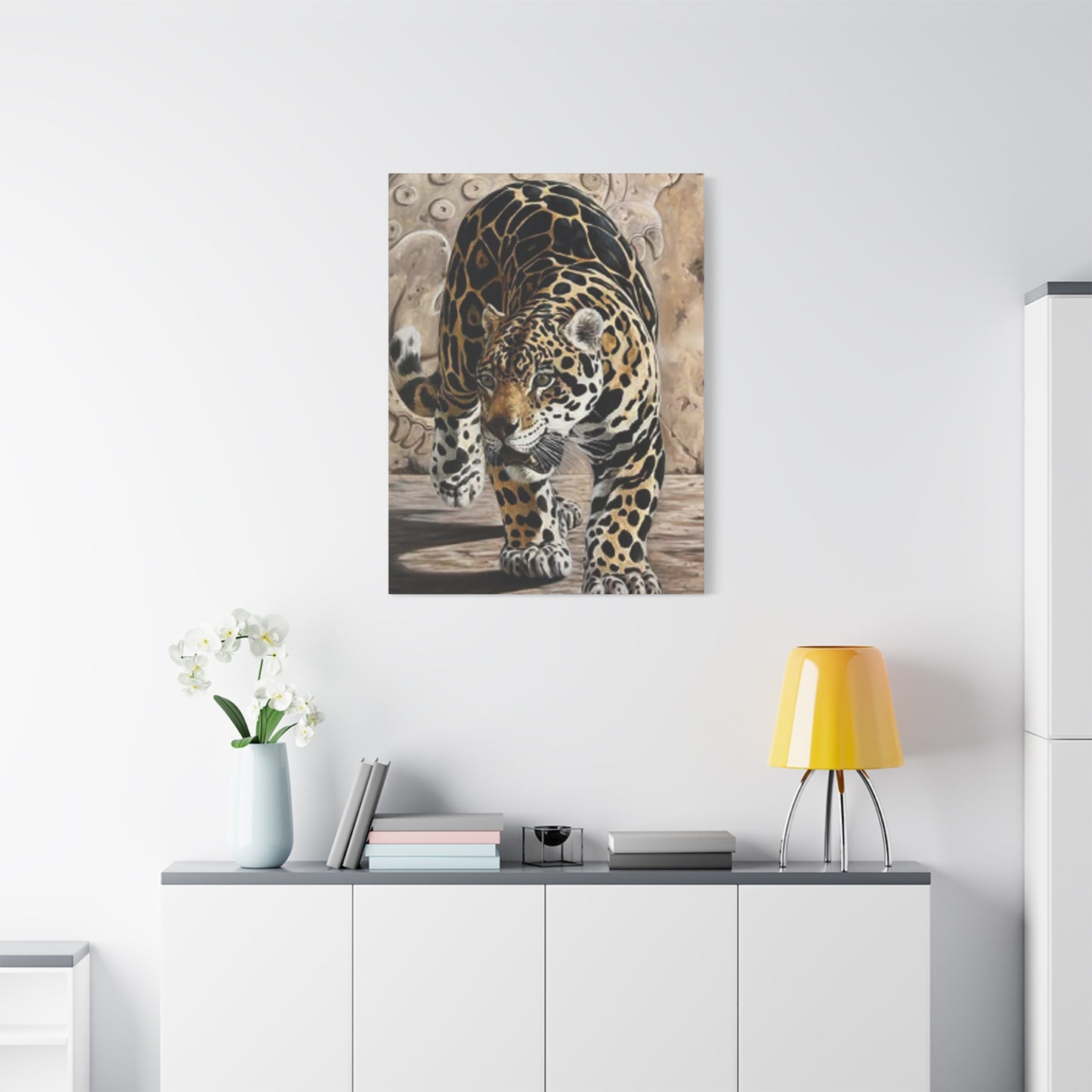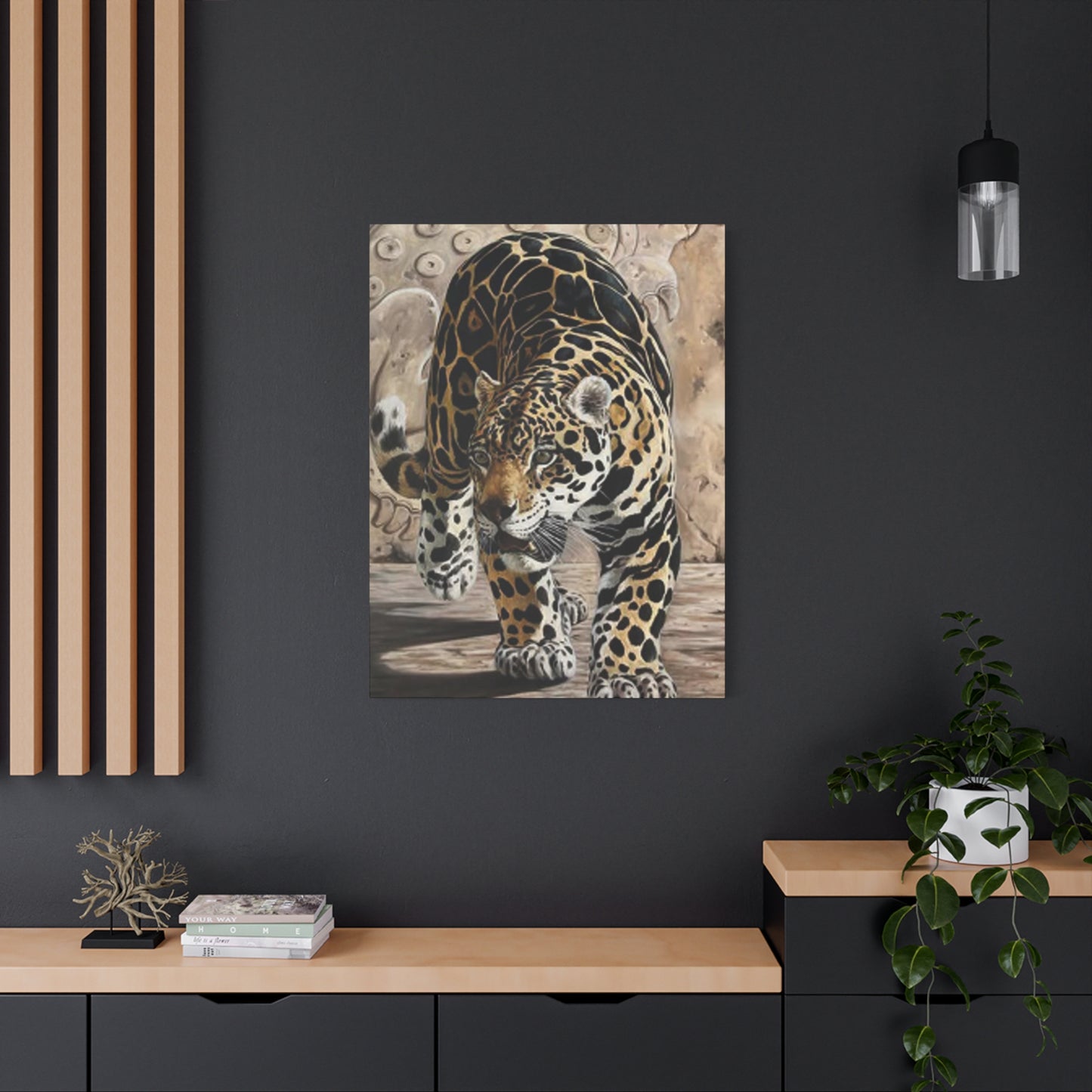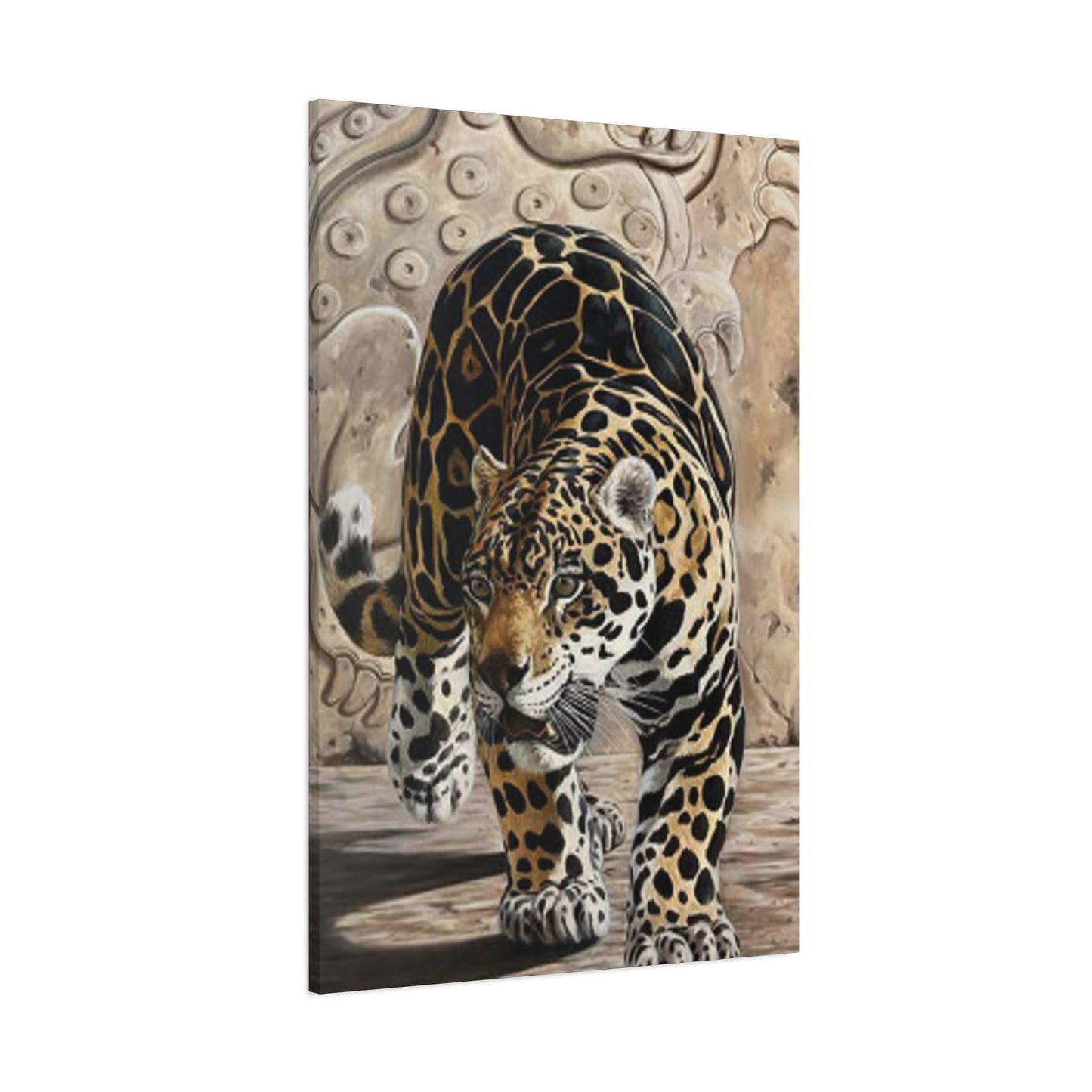Cheetah Wall Art: Bringing Wild Elegance Into Modern Interior Design
The world of interior design has witnessed a remarkable surge in wildlife-themed artwork, with cheetah wall art emerging as one of the most captivating and sought-after choices for modern homes and commercial spaces. These magnificent big cats, known for their incredible speed and distinctive spotted coats, have transcended their natural habitat to become powerful symbols of grace, strength, and untamed beauty in contemporary decor. The appeal of cheetah-inspired artwork lies not only in the animal's striking physical characteristics but also in the emotional response these pieces evoke, bringing a sense of adventure, freedom, and natural wonder into our living spaces.
The fascination with cheetah imagery in art stems from humanity's long-standing relationship with these extraordinary creatures. Throughout history, cheetahs have been revered across various cultures, often representing speed, agility, and royal power. Ancient Egyptian pharaohs kept cheetahs as hunting companions, while medieval European nobility prized them as symbols of prestige. This rich cultural heritage continues to influence modern artistic interpretations, making cheetah wall art a bridge between our ancestral connections to the wild and contemporary aesthetic sensibilities.
In today's fast-paced world, cheetah wall art serves as more than mere decoration; it becomes a statement of personal identity and lifestyle aspirations. The choice to incorporate these powerful feline images into our homes reflects a desire to connect with nature's raw beauty while celebrating the freedom and independence these animals represent. Whether displayed in minimalist modern settings or traditional spaces seeking a touch of exotic flair, cheetah artwork has the unique ability to transform ordinary rooms into extraordinary environments that speak to our deepest appreciation for the natural world.
Artistic Expressions of Feline Grace in Contemporary Spaces
The artistic representation of cheetahs in wall art encompasses a vast spectrum of styles, techniques, and interpretations, each offering unique perspectives on these remarkable creatures. Contemporary artists have embraced various mediums to capture the essence of cheetah beauty, from hyperrealistic oil paintings that showcase every detail of their distinctive coat patterns to abstract interpretations that focus on the emotional impact of their presence. Photography-based prints have gained tremendous popularity, allowing viewers to experience intimate moments with cheetahs in their natural habitat, frozen in time and displayed with museum-quality clarity.
Watercolor cheetah paintings offer a softer, more ethereal approach to feline art, with flowing brushstrokes and translucent layers creating dreamlike representations that emphasize the grace and fluidity of these magnificent animals. The medium's inherent unpredictability mirrors the wild nature of cheetahs themselves, resulting in pieces that feel alive and dynamic. Digital art has opened new frontiers in cheetah representation, enabling artists to experiment with colors, textures, and compositions that might be impossible in traditional mediums, creating stunning pieces that push the boundaries of wildlife art.
Mixed media approaches combine various artistic elements to create layered, textured pieces that engage multiple senses and create depth both literally and figuratively. These works often incorporate natural materials like sand, leaves, or actual fur textures, bringing tactile elements that enhance the connection between the artwork and the viewer. Sculptural wall reliefs add three-dimensional aspects to cheetah art, creating shadows and depth that change throughout the day as natural light shifts, making the artwork a living, breathing element of the space.
The choice of artistic style often reflects the intended emotional impact and the specific atmosphere desired in a space. Realistic representations tend to create a sense of immediacy and presence, making viewers feel as though they are sharing space with these magnificent creatures. Abstract interpretations, on the other hand, allow for more personal emotional connections, as viewers can project their own feelings and experiences onto the flowing forms and dynamic compositions. The versatility of cheetah imagery makes it suitable for virtually any artistic interpretation while maintaining its powerful symbolic resonance.
Capturing Wildlife Essence Through Creative Wall Displays
The art of displaying cheetah wall pieces extends far beyond simply hanging a frame on a wall. Creating effective wildlife-themed displays requires careful consideration of composition, lighting, spacing, and the relationship between the artwork and the surrounding environment. Professional interior designers often treat cheetah art as the centerpiece of a room's design scheme, building color palettes, furniture choices, and decorative elements around the powerful presence these pieces command.
Single large-scale cheetah pieces can serve as dramatic focal points, commanding attention and establishing the room's character immediately upon entry. These statement pieces work particularly well in spaces with high ceilings or expansive wall areas, where their impact can be fully appreciated without overwhelming the space. The positioning of such pieces requires careful consideration of viewing angles, ensuring that the artwork can be properly appreciated from various positions within the room while maintaining appropriate visual balance with other design elements.
Gallery walls featuring multiple cheetah images create storytelling opportunities, allowing viewers to experience different aspects of these animals' lives and behaviors. Such arrangements might progress from playful cubs to majestic adults, or showcase various artistic interpretations of the same subject. The key to successful gallery walls lies in maintaining visual cohesion while allowing each piece to contribute its unique perspective to the overall narrative. Spacing, frame coordination, and size variation all play crucial roles in creating harmonious yet dynamic displays.
Lighting plays a crucial role in bringing cheetah wall art to life, with properly positioned illumination revealing textures, colors, and details that might otherwise remain hidden. Natural light can create beautiful interactions with cheetah artwork throughout the day, but artificial lighting provides consistency and control. Track lighting, picture lights, or strategically placed accent lamps can dramatically enhance the viewing experience, creating depth and dimension that draws viewers into the artwork.
The integration of cheetah art with other design elements requires sensitivity to both the power of the imagery and the overall aesthetic goals of the space. Complementary colors found in the cheetah's natural palette – golds, browns, creams, and blacks – can be echoed throughout the room in textiles, furniture, and accessories without creating overwhelming themes. The goal is to create harmony that enhances rather than competes with the artwork's natural magnetism.
Modern Interior Design Integration with Wildlife Themes
The incorporation of cheetah wall art into modern interior design represents a sophisticated approach to bringing natural elements into contemporary living spaces. Today's design philosophy embraces the concept of biophilic design, recognizing the human need for connection with nature even within urban environments. Cheetah artwork serves this purpose beautifully, providing a powerful link to the wild world while maintaining the clean, uncluttered aesthetic that defines modern design sensibilities.
Contemporary interior design trends favor clean lines, neutral color palettes, and carefully curated decorative elements, creating the perfect backdrop for dramatic cheetah artwork. The contrast between sleek, modern furniture and the raw, primal energy of cheetah imagery creates visual tension that energizes spaces and prevents them from feeling sterile or cold. This juxtaposition speaks to the modern lifestyle's balance between technological advancement and our fundamental connection to the natural world.
Minimalist design approaches particularly benefit from the addition of cheetah wall art, as these pieces can serve as the primary decorative element in otherwise sparse spaces. A single, powerful cheetah image can provide all the visual interest a minimalist room needs while maintaining the uncluttered aesthetic that defines this design philosophy. The key lies in choosing pieces with clean compositions and avoiding overly busy or complex images that might conflict with minimalist principles.
Color coordination becomes crucial when integrating cheetah art into modern spaces, as the natural palette of these animals offers rich opportunities for creating cohesive design schemes. The warm golds and tawny browns of cheetah coats complement both warm and cool modern color palettes, while the dramatic blacks of their spots provide striking accent opportunities. Neutral backgrounds in cheetah artwork work particularly well in modern settings, allowing the furniture and architectural elements to maintain their prominence while the artwork provides emotional depth.
Texture plays an increasingly important role in modern design, as spaces seek to avoid the cold, impersonal feeling that can result from too much emphasis on smooth, manufactured surfaces. Cheetah artwork, particularly pieces that emphasize the texture of the animal's coat or capture the roughness of their natural habitat, adds organic warmth that balances modern materials like steel, glass, and polished stone. This textural contrast creates spaces that feel both contemporary and inviting.
Photographic Mastery in Cheetah Wall Art Collections
Wildlife photography has elevated cheetah wall art to new heights of realism and emotional impact, with professional photographers spending countless hours in the field to capture these elusive creatures in their most authentic moments. The resulting images offer viewers unprecedented access to the private lives of cheetahs, revealing intimate behaviors, family dynamics, and environmental interactions that few people ever witness firsthand. These photographic masterpieces transform ordinary walls into windows to the African savanna, creating immersive experiences that transport viewers across continents.
The technical challenges of cheetah photography are immense, requiring specialized equipment, extensive patience, and deep understanding of animal behavior. High-speed cameras capable of freezing motion at thousands of frames per second are essential for capturing cheetahs in full sprint, revealing details of their incredible athleticism that would be impossible to see with the naked eye. Long telephoto lenses allow photographers to maintain safe distances while still achieving intimate compositions, and advanced image stabilization technology ensures sharp results even when photographing from moving vehicles.
Portrait-style cheetah photography focuses on capturing the emotional depth and intelligence visible in these animals' eyes, creating artwork that establishes powerful connections between viewers and subjects. These close-up images reveal the complex personalities of individual cheetahs, showing everything from maternal tenderness to predatory intensity. The shallow depth of field commonly used in such portraits isolates the subject from potentially distracting backgrounds, creating clean, powerful compositions that work beautifully in modern interior settings.
Environmental cheetah photography places these magnificent animals within the context of their natural habitat, creating artwork that tells broader stories about conservation, ecosystem relationships, and the breathtaking beauty of African landscapes. These wide-angle compositions often feature dramatic skies, golden grasslands, and the interplay of light and shadow that defines the savanna environment. Such pieces work particularly well in larger spaces where their expansive nature can be fully appreciated.
Black and white cheetah photography offers a timeless elegance that transcends trend-driven color schemes, creating artwork that remains relevant regardless of changing interior design fashions. The removal of color forces viewers to focus on form, texture, and emotional content, often resulting in more powerful and lasting impressions. These monochromatic pieces work exceptionally well in contemporary settings, where they can provide dramatic contrast without introducing potentially conflicting color elements.
Abstract Interpretations of Cheetah Movement and Form
Abstract cheetah art opens up exciting possibilities for artistic interpretation, moving beyond literal representation to explore the emotional and symbolic significance of these remarkable animals. Artists working in abstract styles can focus on capturing the essence of cheetah movement, the rhythm of their spotted patterns, or the energy and grace that define their character. These interpretations often resonate on deeper levels than purely realistic representations, allowing viewers to connect with their own feelings and associations while appreciating the artist's unique vision.
Geometric abstractions might break down cheetah forms into angular shapes and bold patterns, creating modern interpretations that emphasize the mathematical beauty found in nature. The natural geometry of cheetah spots provides rich source material for such approaches, with artists creating compositions that echo these patterns while transforming them into contemporary art statements. These pieces work particularly well in modern office settings or contemporary homes where geometric design elements are prominent.
Fluid abstract representations capture the grace and movement characteristic of cheetahs through flowing lines, dynamic brushstrokes, and organic forms that seem to pulse with life. Watercolor techniques prove particularly effective for this approach, as the medium's natural flow and unpredictability mirror the fluid grace of cheetah movement. Such pieces can soften rigid modern interiors while maintaining the power and energy associated with these magnificent predators.
Color field abstractions might explore the emotional impact of cheetah imagery through bold blocks of color and subtle tonal variations, creating pieces that evoke the feeling of encountering these animals without depicting them literally. The warm earth tones associated with African savannas provide rich palettes for such explorations, resulting in artwork that brings warmth and organic energy to contemporary spaces without overwhelming them with literal imagery.
Mixed media abstract approaches combine traditional painting techniques with collage elements, textural additions, and experimental materials to create layered compositions that engage multiple senses. Artists might incorporate actual sand from African regions, fabric with cheetah-like patterns, or metallic elements that catch and reflect light in ways that echo the play of sunshine on cheetah coats. These multi-dimensional pieces create engaging focal points that reward close examination while maintaining their impact from greater distances.
Creating Dramatic Focal Points with Feline Artwork
The strategic use of cheetah wall art as dramatic focal points can transform ordinary spaces into extraordinary environments that command attention and create lasting impressions. The inherent power and magnetism of cheetah imagery make these pieces natural candidates for serving as the visual anchor around which entire room designs can be built. Understanding how to maximize this impact requires careful consideration of scale, placement, surrounding elements, and the specific characteristics that make each piece unique.
Large-scale cheetah artwork creates immediate impact through sheer presence, but the key to effective focal points lies not just in size but in the strategic use of contrast and visual hierarchy. A powerful cheetah image gains even more impact when displayed against a simple, unadorned background that allows its details and energy to shine without competition. The contrast between the wild, organic nature of the cheetah and clean, contemporary wall treatments creates visual tension that energizes the entire space.
Positioning plays a crucial role in maximizing focal point effectiveness, with the ideal location being the first area that draws the eye when entering a room. This might be the wall directly opposite the main entrance, above a fireplace mantel, or behind a key piece of furniture like a sofa or dining table. The artwork should be positioned at appropriate eye level, typically with the center of the piece 57-60 inches from the floor, though adjustments may be necessary based on ceiling height and furniture relationships.
Lighting design becomes crucial when cheetah art serves as a focal point, as proper illumination can dramatically enhance the piece's impact while poor lighting can diminish even the most spectacular artwork. Professional-quality picture lighting, whether integrated track systems or dedicated picture lights, should provide even illumination across the entire surface while avoiding glare or reflection issues. The color temperature of the lighting should complement the artwork's palette, with warmer lights typically enhancing the natural earth tones found in cheetah imagery.
The relationship between focal point artwork and surrounding design elements requires careful orchestration to avoid competition while creating supportive harmony. Furniture arrangements should acknowledge and complement the artwork's placement, potentially directing seating toward the piece or creating viewing angles that allow for comfortable appreciation. Color schemes throughout the room can echo elements found in the cheetah artwork without copying them directly, creating subtle connections that unify the space.
Professional Photography Techniques for Wildlife Wall Displays
The world of professional cheetah photography represents the pinnacle of wildlife imaging, combining advanced technical skills with intimate knowledge of animal behavior to create artwork that captures the true essence of these magnificent creatures. Professional photographers specializing in cheetah imagery spend years perfecting their craft, learning not just the technical aspects of photography but also developing the patience, persistence, and field skills necessary to work successfully with wild animals in challenging environments.
Camera equipment selection proves crucial for cheetah photography, with professional-grade bodies featuring high-speed burst modes, excellent low-light performance, and weather sealing being essential for field work. Full-frame sensors provide the image quality necessary for large-format prints, while crop sensor cameras can offer advantages in terms of effective focal length when working with telephoto lenses. Mirrorless camera systems have gained popularity among wildlife photographers due to their lighter weight and advanced autofocus capabilities, making them ideal for the long days often required to capture exceptional cheetah images.
Lens selection significantly impacts the style and quality of cheetah photography, with different focal lengths offering unique creative possibilities. Super-telephoto lenses in the 400-600mm range allow photographers to capture intimate portraits while maintaining safe distances, essential when working with wild predators. These lenses also provide the shallow depth of field that helps isolate subjects from potentially distracting backgrounds, creating clean compositions that work well as wall art. Wide-angle lenses, while less commonly used for cheetah photography, can create dramatic environmental portraits that show these animals in the context of their vast African habitats.
Autofocus technology has revolutionized cheetah photography, with modern cameras featuring sophisticated tracking systems capable of maintaining focus on rapidly moving subjects. Eye detection autofocus proves particularly valuable for cheetah portraits, ensuring that the most important part of the image remains tack sharp even when shooting at wide apertures. Subject tracking modes can follow cheetahs as they move across the frame, dramatically improving the success rate for action shots.
Post-processing techniques play a crucial role in transforming good cheetah photographs into exceptional wall art. Professional wildlife photographers employ advanced editing software to optimize exposure, enhance details, and ensure accurate color reproduction. Noise reduction algorithms help maintain image quality when shooting in low light conditions, common during the golden hours when cheetahs are most active. Sharpening techniques enhance the texture of cheetah coats and the clarity of their distinctive spot patterns, while color grading can emphasize the warm tones of African light.
Canvas Art Versus Traditional Print Media Options
The choice between canvas printing and traditional print media significantly impacts both the visual presentation and longevity of cheetah wall art, with each option offering distinct advantages depending on the specific application and aesthetic goals. Canvas printing has gained tremendous popularity in recent years due to its ability to replicate the look and feel of original paintings while providing durability and versatility that traditional paper prints cannot match. The texture of canvas adds depth and dimension to cheetah imagery, particularly enhancing the representation of fur textures and the organic qualities that make these animals so visually compelling.
Modern giclee printing on canvas utilizes advanced inkjet technology and archival inks to produce museum-quality reproductions that can last for decades without fading when properly displayed and maintained. The process involves printing directly onto specially prepared canvas materials using pigment-based inks that resist UV degradation and moisture damage. The resulting prints maintain exceptional color accuracy and detail resolution, capturing subtle gradations in cheetah coat patterns and the complex interplay of light and shadow that defines exceptional wildlife photography.
Canvas wrapping techniques allow cheetah art to be displayed without traditional framing, creating a modern, gallery-style presentation that works particularly well in contemporary settings. Gallery wraps, where the image extends around the edges of the stretched canvas, create a floating appearance that enhances the three-dimensional quality of the presentation. Museum wraps utilize neutral colors or extensions of the image background on the sides, providing a more conservative approach that works well in traditional settings.
Traditional print media options include various paper types, each offering unique characteristics that can enhance different aspects of cheetah imagery. Fine art papers with matte finishes reduce glare and provide excellent color reproduction for detailed wildlife photography, while glossy papers enhance color saturation and contrast for dramatic impact. Metallic papers create unique effects with cheetah art, adding subtle shimmering qualities that can enhance the representation of sunlight on fur or the intensity of golden eyes.
Acrylic mounting has emerged as a premium option for cheetah wall art, involving the printing of images directly onto or behind high-quality acrylic panels. This process creates stunning depth and clarity while providing excellent protection for the image. Face-mounted acrylic prints offer exceptional sharpness and color vibrancy, while rear-mounted options provide a more subtle, elegant appearance. The smooth, modern look of acrylic mounting works particularly well with contemporary cheetah photography and minimalist interior designs.
Color Psychology and Cheetah Imagery in Home Decor
The psychological impact of color in cheetah wall art extends far beyond mere aesthetic considerations, influencing mood, energy levels, and overall emotional responses to interior spaces. The natural color palette associated with cheetahs – warm golds, rich browns, creamy tans, and dramatic blacks – carries specific psychological associations that can enhance the atmosphere and emotional quality of living environments. Understanding these color relationships enables homeowners and designers to make informed decisions about incorporating cheetah artwork into their spaces.
Golden and amber tones dominant in cheetah imagery are associated with warmth, optimism, and energy, creating inviting atmospheres that encourage social interaction and positive thinking. These warm hues can make large spaces feel more intimate and cold spaces feel more welcoming, particularly effective in northern climates or rooms with limited natural light. The golden hour lighting often featured in exceptional cheetah photography reinforces these psychological associations, bringing the warmth and energy of African sunsets into modern homes.
Brown tones in cheetah art provide grounding and stability, creating psychological foundations that help spaces feel secure and comfortable. These earth tones connect viewers to natural environments and can reduce stress while promoting relaxation. The rich chocolate browns often found in cheetah shadows and background elements work particularly well in spaces designed for rest and contemplation, such as bedrooms or reading areas.
The dramatic black elements in cheetah patterns – their distinctive spots and markings – provide visual punctuation and sophistication that prevent earth-toned spaces from feeling bland or monotonous. Black adds elegance and formality while creating contrast that makes other colors appear more vibrant. In cheetah art, these dark elements often define the animal's form and character, contributing to the sense of power and grace that makes these pieces so compelling.
Cream and tan tones offer neutrality and versatility, serving as bridges between stronger colors while providing rest areas for the eye. These lighter elements in cheetah imagery help prevent artwork from overwhelming smaller spaces while maintaining the warm, organic feeling associated with these magnificent animals. The interplay between light and dark elements in cheetah patterns creates visual rhythm that can add movement and interest to static wall surfaces.
Color temperature considerations become important when selecting cheetah artwork for specific lighting conditions, as warm-toned pieces may appear different under cool LED lighting compared to warm incandescent sources. The natural warmth of cheetah imagery generally works best with lighting that reinforces rather than conflicts with these inherent color characteristics.
Scale and Proportion Considerations for Wall Art Placement
The successful integration of cheetah wall art into interior spaces requires careful attention to scale and proportion relationships that ensure harmonious visual balance while maximizing impact. Oversized artwork can overwhelm smaller spaces, while undersized pieces may get lost in expansive rooms, failing to achieve their intended decorative and emotional effects. Professional designers employ specific guidelines and principles to determine appropriate sizing for artwork relative to wall dimensions, furniture scales, and room proportions.
The relationship between artwork size and wall space follows established design principles, with most experts recommending that wall art occupy approximately 60-75% of the available wall space for optimal visual impact. This guideline must be adjusted based on the specific characteristics of cheetah imagery, as the powerful presence of these animals can command attention even in smaller formats. Single large-scale cheetah pieces often work better than multiple smaller images when creating dramatic focal points, as they can deliver maximum emotional impact without fragmentation.
Furniture relationships significantly influence appropriate sizing for cheetah wall art, with pieces positioned above sofas, beds, or other major furniture elements requiring careful consideration of proportional harmony. Artwork should typically extend to within 6-8 inches of the furniture edges to create visual connection without overwhelming the space. The height of furniture backs, the depth of seating, and the overall mass of furnishings all factor into determining ideal artwork proportions.
Ceiling height dramatically affects the perception of artwork scale, with standard 8-foot ceilings requiring different approaches than the soaring heights found in contemporary loft spaces or traditional homes with 10+ foot ceilings. Higher ceilings can accommodate proportionally larger cheetah artwork, while lower ceilings may benefit from horizontal formats that emphasize width rather than height. The vertical placement of artwork must also adjust for ceiling height, with higher ceilings allowing for artwork to be hung slightly higher than the standard 57-inch center height.
Multiple piece installations require additional consideration of spacing relationships, visual weight distribution, and the overall composition created by the grouping. Gallery walls featuring cheetah imagery should maintain consistent spacing between pieces while allowing each image sufficient visual breathing room to be appreciated individually. The overall shape and dimensions of gallery wall arrangements should relate proportionally to the wall space and surrounding furniture in the same way that single large pieces would.
Lighting Strategies for Enhancing Wildlife Wall Displays
Proper lighting can transform good cheetah wall art into extraordinary visual experiences, revealing details, enhancing colors, and creating dramatic effects that bring these magnificent animals to life within interior spaces. The strategic use of both natural and artificial lighting sources requires understanding of how different light qualities affect the perception of artwork while considering the practical needs of daily living. Professional lighting design for cheetah art involves layering different light sources to create optimal viewing conditions throughout various times of day and different usage scenarios.
Natural light provides the most authentic illumination for cheetah artwork, as it reveals colors and details in the most natural way possible. However, direct sunlight can damage artwork over time through UV exposure and heat, requiring careful positioning and protection strategies. North-facing walls typically receive the most consistent natural light without direct sun exposure, making them ideal locations for valuable cheetah art. UV-filtering window treatments can protect artwork while maintaining the benefits of natural illumination.
Picture lighting specifically designed for artwork illumination offers precise control over how cheetah wall art appears, with adjustable beam angles and color temperatures that can enhance specific aspects of the imagery. LED picture lights have largely replaced traditional halogen sources due to their lower heat output, longer lifespan, and improved color rendering capabilities. The positioning of picture lights requires careful consideration of artwork surface textures, frame depths, and viewing angles to avoid unwanted shadows or glare.
Track lighting systems provide flexibility for illuminating cheetah art installations, particularly useful for gallery walls or changing displays. Adjustable fixtures can be repositioned as needed, while dimming capabilities allow for different lighting moods throughout the day. The key to successful track lighting lies in proper spacing and angle adjustment to ensure even illumination across the entire artwork surface without creating hot spots or shadows.
Ambient lighting in rooms featuring cheetah wall art should complement rather than compete with accent lighting on the artwork itself. General room illumination affects how artwork appears and should be considered as part of the overall lighting design. The contrast between ambient light levels and accent lighting on artwork helps create visual hierarchy and draws attention to the cheetah pieces as intended focal points.
Framing Options and Presentation Techniques
The framing and presentation of cheetah wall art significantly impacts both the visual effectiveness of the pieces and their integration into interior design schemes. Professional framing goes beyond simple protection to enhance the artwork's impact while ensuring long-term preservation. The choice of framing materials, styles, and techniques can either complement the power and beauty of cheetah imagery or detract from it, making informed selection crucial for achieving desired aesthetic outcomes.
Traditional framing approaches for cheetah photography and artwork typically employ materials and finishes that complement rather than compete with the subject matter. Natural wood frames in warm tones echo the earth colors found in cheetah habitats while providing organic textures that harmonize with the wild nature of the subject. Darker wood finishes can provide sophisticated contrast, while lighter woods maintain brightness and airiness in smaller spaces.
Metal framing options offer contemporary alternatives that work particularly well with modern cheetah photography and abstract interpretations. Brushed aluminum, aged bronze, or matte black metal frames provide clean lines that complement contemporary interior designs while maintaining focus on the artwork itself. The slim profiles typical of metal frames minimize visual interference while providing sturdy support for larger cheetah pieces.
Matting considerations become important when framing cheetah artwork, as the mat serves both protective and aesthetic functions. Archival matting materials prevent acid damage to artwork over time, while mat colors and widths affect the visual presentation. Neutral mat colors typically work best with cheetah imagery, allowing the natural colors of the animals to remain the focus. Double matting techniques can add sophistication and depth to the presentation.
Glazing options protect cheetah artwork while affecting its appearance and viewing experience. Regular glass provides basic protection but can create reflection issues that interfere with viewing. Museum-quality glazing with anti-reflective coatings eliminates reflection problems while providing UV protection that prevents fading. Acrylic glazing offers lighter weight and shatter resistance, particularly important for larger cheetah pieces.
Floating frame techniques create modern presentations that make artwork appear to float within the frame space, adding contemporary sophistication while maintaining focus on the cheetah imagery. These approaches work particularly well with canvas prints and contemporary photography, creating clean, uncluttered presentations that complement modern interior designs.
Digital Art Innovation in Cheetah Representations
The digital art revolution has opened new frontiers in cheetah representation, enabling artists to create stunning interpretations that would be impossible using traditional mediums. Digital techniques allow for experimentation with colors, textures, compositions, and effects that push the boundaries of wildlife art while maintaining the essential characteristics that make cheetah imagery so compelling. These innovative approaches create unique artwork options for contemporary spaces while offering new ways to connect with and appreciate these magnificent animals.
Digital painting techniques enable artists to create hyperrealistic cheetah portraits with unprecedented control over every detail, from individual hairs in their coats to the subtle reflections in their eyes. Advanced software provides tools that simulate traditional painting media while offering capabilities for layering, blending, and texturing that exceed what is possible with physical materials. The result is artwork that can achieve photographic realism while maintaining the expressive qualities of traditional painting.
Photo manipulation and digital compositing allow artists to create surreal and fantastical cheetah imagery that places these animals in impossible environments or situations while maintaining believable quality. These techniques might combine multiple photographs to create composite scenes, adjust colors and lighting for dramatic effect, or add elements that enhance the symbolic or emotional impact of the imagery. The key to successful digital manipulation lies in maintaining the essential character of cheetahs while expanding creative possibilities.
Vector art approaches to cheetah representation focus on clean geometric forms and bold simplified shapes that work particularly well in contemporary design settings. These digital illustrations can be scaled to any size without quality loss, making them ideal for large-format wall installations. The simplified forms typical of vector art can distill cheetah imagery to its most essential elements while maintaining immediate recognition and emotional impact.
Digital mixed media combines various digital techniques with scanned traditional materials, creating layered compositions that bridge the gap between traditional and digital art. Artists might scan fabric textures, paint splatters, or natural materials to incorporate into digital cheetah compositions, creating rich, tactile-feeling artwork that engages viewers on multiple levels. These approaches offer unlimited creative possibilities while maintaining connection to traditional art-making processes.
Interactive digital art installations represent the cutting edge of cheetah wall art, incorporating sensors, projection systems, or display screens that respond to viewer presence or movement. These installations might show cheetahs reacting to approaching viewers, create animated sequences triggered by motion, or allow viewers to interact with digital environments containing virtual cheetahs. Such installations work particularly well in commercial spaces or modern homes seeking unique statement pieces.
Conservation Themes Through Artistic Wildlife Expression
Cheetah wall art serves purposes beyond decoration, often carrying powerful conservation messages that raise awareness about the challenges facing these magnificent animals in the wild. Artists working with cheetah imagery frequently incorporate environmental themes, habitat preservation messages, and species protection advocacy into their work, creating pieces that educate viewers while providing aesthetic enjoyment. This dual purpose adds depth and meaning to cheetah wall art, making it relevant for environmentally conscious consumers and spaces dedicated to wildlife preservation.
Population decline awareness becomes a subtle but important theme in many contemporary cheetah artworks, with artists finding creative ways to highlight the precarious status of wild cheetah populations without overwhelming the decorative aspects of their pieces. Statistical information might be incorporated into artist statements or gallery descriptions, while the artwork itself focuses on celebrating the beauty and importance of these animals. This approach allows viewers to appreciate the aesthetic qualities while becoming educated about conservation needs.
Habitat preservation themes appear in cheetah artwork that emphasizes the relationship between these animals and their environment, showing the vast grasslands, scattered trees, and open spaces essential for cheetah survival. Such pieces remind viewers that protecting cheetahs requires preserving entire ecosystems, not just individual animals. Environmental artwork featuring cheetahs often includes elements of the African savanna, from acacia trees to golden grasses, creating comprehensive images that tell broader ecological stories.
Human-wildlife conflict issues find expression in cheetah art that explores the complex relationships between expanding human populations and shrinking wildlife habitats. Artists might juxtapose images of cheetahs with subtle references to agricultural development, urban expansion, or other human activities that impact wildlife survival. These pieces encourage viewers to consider their own relationships with the natural world while appreciating the beauty of cheetah imagery.
Conservation success stories also inspire cheetah artwork, with pieces celebrating breeding programs, habitat restoration efforts, and successful protection initiatives. Such artwork provides hopeful messages while maintaining the aesthetic appeal that makes cheetah imagery so popular in interior design applications. Positive conservation themes can make spaces feel uplifting and inspiring while contributing to important environmental awareness efforts.
Research and scientific study themes appear in cheetah artwork that incorporates elements of field research, GPS tracking technology, or scientific observation into artistic compositions. These pieces celebrate the dedicated scientists and conservationists working to understand and protect cheetah populations while creating visually interesting artwork that appeals to scientifically minded viewers.
Custom Art Commissioning for Personalized Wildlife Displays
The commissioning of custom cheetah wall art allows for personalized approaches that perfectly match specific design requirements, personal preferences, and spatial considerations. Working with professional artists to create unique cheetah pieces ensures that the resulting artwork will be perfectly suited to its intended environment while reflecting the owner's individual taste and vision. Custom commissioning processes involve collaboration between clients and artists to develop concepts, refine compositions, and create one-of-a-kind pieces that cannot be found in standard commercial offerings.
Artist selection becomes crucial when commissioning custom cheetah artwork, as different artists bring varying styles, techniques, and specializations to their work. Wildlife specialists with extensive field experience often create the most authentic and scientifically accurate cheetah representations, while fine artists with broader backgrounds might offer more interpretive or stylized approaches. Reviewing artist portfolios, understanding their working methods, and discussing their experience with cheetah subjects helps ensure good matches between clients and artists.
Concept development begins with discussions of client preferences, spatial requirements, and intended emotional impact for the custom cheetah artwork. Clients might specify particular cheetah behaviors they find compelling, preferred color schemes that match their interior design, or specific sizes and formats required for their intended installation locations. Artists typically provide preliminary sketches or digital mockups to help clients visualize proposed concepts before beginning final artwork production.
Reference material becomes essential for creating authentic custom cheetah artwork, with artists relying on high-quality photographs, field sketches, and sometimes direct observation of captive cheetahs to ensure accuracy in their representations. Clients with specific cheetah images in mind can provide reference photographs, while artists with extensive wildlife libraries can offer various options for consideration. The quality and authenticity of reference materials directly impact the success of finished custom pieces.
Timeline considerations for custom cheetah art commissions vary based on medium, size, complexity, and artist schedules, with most quality pieces requiring weeks or months for completion. Oil paintings typically require longer timeframes than watercolors or digital art, while larger pieces need more time than smaller works. Clients should plan ahead for custom commissions, particularly when artwork is needed for specific events or completion deadlines.
Revision processes allow clients to request adjustments during the creation of custom cheetah artwork, though the extent of possible changes depends on the medium and stage of completion. Digital artwork offers more flexibility for revisions than traditional media, while early-stage changes are generally easier to accommodate than those requested near completion. Clear communication about expectations and revision policies helps prevent misunderstandings during the commissioning process.
Gallery Wall Arrangements with Cheetah Photography
Creating effective gallery walls featuring cheetah photography requires careful consideration of image relationships, sizing variations, and overall compositional harmony while maintaining the individual impact of each piece. Gallery wall arrangements offer opportunities to tell visual stories about cheetah behavior, life cycles, or various artistic interpretations while creating dynamic displays that can adapt to different wall sizes and shapes. The key to successful cheetah gallery walls lies in balancing unity and variety to create cohesive yet interesting displays.
Image selection for cheetah gallery walls should consider both visual harmony and storytelling potential, with pieces that complement each other while offering sufficient variety to maintain viewer interest. Mixing different perspectives – close-ups, environmental shots, action sequences, and portrait styles – creates dynamic visual rhythm while showcasing various aspects.
Conclusion
Cheetah wall art effortlessly brings a touch of wild elegance into modern interior design, merging the raw beauty of nature with sophisticated style. The sleek, powerful form of the cheetah symbolizes speed, grace, and agility—qualities that add dynamic energy and a sense of movement to any room. Whether featured as a realistic portrait, abstract interpretation, or minimalist silhouette, cheetah artwork becomes a striking focal point that commands attention while complementing contemporary décor.
Incorporating cheetah wall art into your space not only celebrates the majesty of wildlife but also introduces a bold, natural element that contrasts beautifully with clean lines and modern furnishings. This balance between the untamed and the refined creates an atmosphere that feels both invigorating and harmonious. Cheetah imagery can evoke feelings of strength and confidence, inspiring those who live or work within the space.
Furthermore, cheetah wall art serves as a reminder of the delicate relationship between humans and the natural world, encouraging appreciation and respect for wildlife conservation. By bringing this powerful creature into your home, you foster a connection to nature’s elegance and vitality, even in an urban setting.
Ultimately, cheetah wall art is more than decorative—it’s a statement of style and spirit. It enriches modern interiors by blending wild beauty with sophisticated design, transforming everyday spaces into bold, inspiring environments. For anyone seeking to infuse their home with energy, grace, and a hint of the exotic, cheetah wall art is a perfect choice that embodies wild elegance with timeless appeal.

















